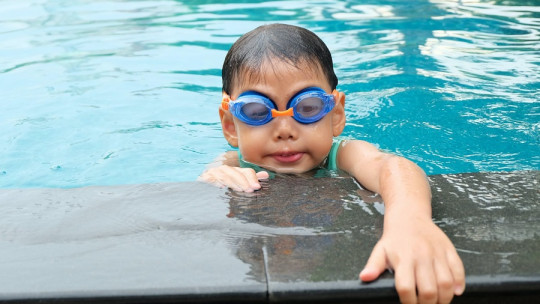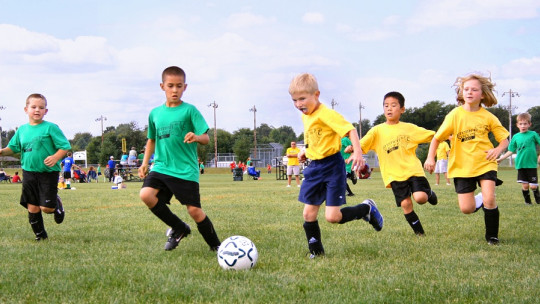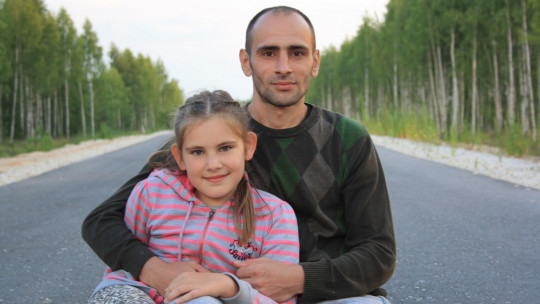
Many parents worry about their children’s attention span even at an early age. At the very least that they see that they are not constantly listening to dad when he tells them a story, playing a toy or doing homework, many fathers and mothers put themselves in the worst situation, fearing that their child may have ADHD or something like that.
It could be that yes, the child had some concentration problem, however in most cases The problem is that their parents do not know at what age we acquire the ability to maintain attention seeing with adult eyes the development of their children, who are still children and like everyone else their attention is rather limited.
Fortunately, this will change as the child grows, becoming able to concentrate for longer, both on tasks that are fun and those in which he or she has to pay voluntary attention, such as homework or being in class. Let’s see it.
At what age do we acquire the ability to maintain attention?
attention is an executive function that is perfected and developed as we grow This is because as we mature, so does our brain, specifically the prefrontal cortex, the brain region where executive functions are located. For this reason, the degree of concentration of a small child and that of an adult are very different: we cannot expect the same functions from an immature brain as one that is fully developed.
When talking about attention, regardless of age, we can talk about two types: involuntary and voluntary. The involuntary is the one that we show when we are doing an activity that we like, that awakens an interest in us that is not at all forced, while the voluntary is the one in which we have to do our part, focus on a task that may be difficult for us. more or less unpleasant and in which a certain cognitive effort is required.
Attention in childhood works in the same way, only involuntary attention takes precedence That is, children concentrate better and longer on those tasks that are fun or attractive to them, such as playing games, watching television, or having a story read to them. They can show voluntary attention, that is, force their concentration, but it is rather anecdotal. It is difficult for them to make that cognitive effort to pay attention to those activities that seem monotonous, boring and heavy to them.
How is care progressing?
It has been seen that between 0 and 3 years old, babies concentrate on tasks that attract and entertain them, although in reality any other activity can attract their attention. It should be said that, likewise, They lose interest pretty quickly in all the things they do, both those they like and those they don’t. Thus, the moment they are presented with a minimally distracting stimulus, they will stop what they are doing and move on to something else. They can’t control it, it’s in their nature, there’s nothing to worry about.
An experimental case in which this was addressed is found in Bashinski’s 1985 study, who took 4-month-old babies and divided them into two groups of equal size. The experiment consisted of putting them on their parents’ laps and showing them visual stimuli, specifically a chess board. Group 1 was shown a 4×4 board; while the 2nd one is 12×12, with many more squares.
The babies in group 2, with the more complex board, paid more attention than those in group 1; now, we would not be talking about sustained attention. The babies simply focused for longer on a more complex and striking stimulus, in this case being the 12×12 chess board. It is not a voluntary or conscious attention, it is just that, since this second stimulus is more striking, it surprises them more.
Between 2 and 4 years, voluntary attention becomes stronger and this is where we could begin to talk about infants being able to maintain attention. They can pay attention for longer periods of time, even on things they don’t like. It is a cognitively demanding activity that requires investing a lot of energy and having a minimally developed neurological structure, specifically the prefrontal cortex. At these ages, attention, like the children themselves, is still in its infancy.
As we grow, attention becomes more stable. This is especially noticeable from 3-4 years old, since boys and girls can play the same game for about 30 minutes and, if they like it a lot, they can go up to 50. In older people, between 5 and 6 years old, the game can last up to almost an hour and a half. It should also be noted that we are talking about pleasurable activities, since those that are not as pleasurable as being in class, concentration lasts less, although it also increases with age.
According to several studies and what has been observed by child psychologists, educational psychologists, early childhood educators and other professionals who work in childhood, we can see that concentration, that is, the ability to maintain sustained attention increases as we grow older Below we will see the expected concentration time for each age during childhood:
It should be noted that these values are not closed, but rather a simple orientation. Attention is a human function that presents individual differences, both in adults and in children, therefore, there may be children who concentrate more and others who concentrate less than expected for their ages. Although they are not indicative of a learning disorder or giftedness or anything like that, these values can serve as a reference when deciding to go to a professional and see if our child has a problem.
Applications of this knowledge
All of this should be of help to many of those parents who, unable to separate themselves from the concern inherent to their role as parents, are very attentive to their children and sometimes, at the slightest point, exaggerate things. If they see that their children cannot last more than ten minutes reading, they begin to think that there could be a problem and if, in addition, they see them playing something that they apparently like but they never get tired, these parents’ hair will stand on end. : “But, if you like it, how come you are not able to continue playing? what’s the problem?”
In fact, One of the problems that many parents believe their children have as soon as they enter a psychologist’s office is ADHD They do not know what the diagnostic criteria are, nor how to evaluate it, they simply believe that their children have ADHD for the simple fact that they see that they get distracted doing what they are doing, without realizing that they are children. How are they not going to get lost? Your brain is not yet ready to focus on one stimulus for a long time.
We must understand that the nature of children is very different from that of adults and that they cannot be studied from our adult perspective, much less as their parents. For example, at 3 years old we cannot expect a child to concentrate as much time as an adult does. If we see that he is a busy child, we should not think that he is hyperactive, absent-minded and inattentive, simply that that is what he is, a child, it is in his nature to be like that.
But the reality is that many parents, especially helicopter parents, force their children to stay focused longer than is neurologically possible. An adult, who can concentrate for about 50 minutes at a time, believes that a child will also do it, but that is not the case. Before the age of 10, it is practically impossible to find a child who can concentrate as much time as his or her parents, and it is normal to acquire the ability to maintain adult attention at the age of 12 or once they have entered adolescence.
But Although some 10-year-old children are already capable of concentrating for 50 minutes in a row, it must be said that this is not entirely common Attention, like any other human faculty, presents individual differences, and children of that age have concentration periods that range from 20 to 50 minutes. This is very important to take into account in class, since children in 3rd and 4th grade will need to change activities every 20 minutes if they want to take advantage of the session. Having the assignment last longer than that time will cause many students to lose track of the class.
In earlier grades, naturally, the activities should last less time or, at least, be more attractive, since since voluntary attention is not the strong point of young children, teachers can rely on involuntary attention and entertain them while at the same time They teach them the contents. Children who do not understand what is being explained to them end up getting frustrated seeing the classes as a real drag and there is a risk that, to have fun, they start clowning around.
Repercussions of knowing all this
Once all this is understood, we can understand why it is so important to know at what age we acquire the ability to maintain attention and for how long we are able to concentrate. Thus, parents do not run the risk of making the mistake of establishing home diagnoses that all they are going to do is label their child incorrectly. A child who believes she has attention problems may make them come true, hindering her academic performance. This is the self-fulfilling prophecy.
As fathers and mothers, We must understand that sooner or later the boy or girl will be able to concentrate for longer, and that we cannot force this process There are children who can endure more, others less, but they will progressively improve. If not, if they have an attention span significantly below what is expected for their age, then there is reason to worry and go to a professional. Now, if there are no alarms or anything to indicate that there is a problem, we should not worry.
Furthermore, we must understand that time does not pass in the same way when we are young. Although it is not entirely the case, in the child’s mind 20 minutes can be perceived as if it were two hours for an adult. Their experience of time is longer and slower, so having to concentrate on something they don’t like can be experienced as a real heaviness and it is normal for there to be a moment in which they lose concentration. It is not a problem of intelligence, it is that they get bored and every effort has a limit.
Know your maximum concentration time It will help us to give him tasks that can be done within the capacity associated with his age, with which, if you finish them successfully, we will increase your self-esteem by seeing that you can do them. In addition, we can guide their learning in a way that avoids frustration, boredom and fatigue, three aspects that can harm learning.








